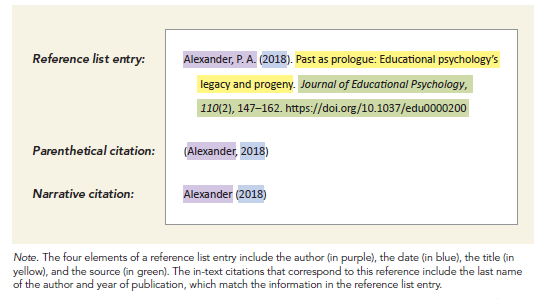Learn More
The website at http://www.apastyle.org/ offers extensive information on guidelines for citing. An online resource and style guide from Purdue OWL is also available here. Or, consult the physical guides at the Mugar Library.
Citing Your Sources
Proper citation is an essential aspect of scholarship! Citing allows your reader or audience to locate the materials you have used. Most importantly, citations give credit to the authors of quoted or consulted information. Failure to acknowledge sources of information properly may constitute plagiarism.
For an explicit definition of plagiarism, see the Boston University Academic Conduct Code.
In the School of Social Work we use the American Psychological Association (APA) style.
What Every Paper Needs
Every APA reference needs four parts: author, date, title, and source. As you go through these examples, you will learn how to identify these four parts and how to place and format them into a proper APA reference. These sources are then used in two ways. Every APA paper needs both:
□ in-text citations (small references within your paper to share author and year)
□ reference list (big reference at the end of your paper with all source information)
In-text Citations:
Your in-text citations allow the reader to understand what source you took information from. In APA format, we share the author's last name and the year. For example:
- Parenthetical Citation Example: Citations are important to showing our scholarly understanding (Flamm, 2025).
- Narrative Citation Example: Flamm argued that citations are important to showing our scholarly understanding (2025).
- Learn more here.
Reference List:
Your reference list is a list of all the sources you used in your paper. They should be listed with the author, date, title, and source and is located at the end of your paper. Learn more here.
Example of Different Entries:
Learn more from the APA Style Guide, available online here.

